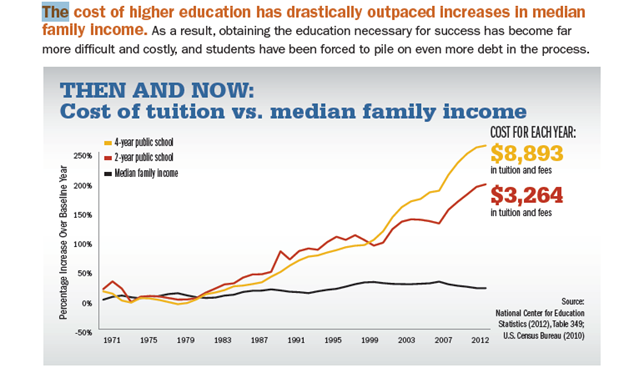- What CCA concluded from the research
- How SWIC addresses CCA's solution

They did uncover corollary cost contributors which are, primarily, students taking longer than the presumed amount of time specifically, 4 years to complete an undergraduate degree.
- Students, overall, take unnecessary, non-degree-related classes. One reason is the schools themselves offer classes that have pop-culture, emotional or intellectual appeal, and are substituted for a degree-necessary class because students want a break from the academic rigor of their majors.
- Students transfer from one college to another. CCA's White Paper states that 60% of bachelor's degree recipients transferred colleges and, thereby, lost credits toward graduation.
- Students need a class that is either full or otherwise unavailable. That may leave them short of credit hours sufficient for scholarship and grant requirements. Therefore, students take classes they do not need simply to generate a credit-hour load for financial aid purposes.
Next blog will specify how SWIC strategically addresses the issue.

 Subscribe
Subscribe
